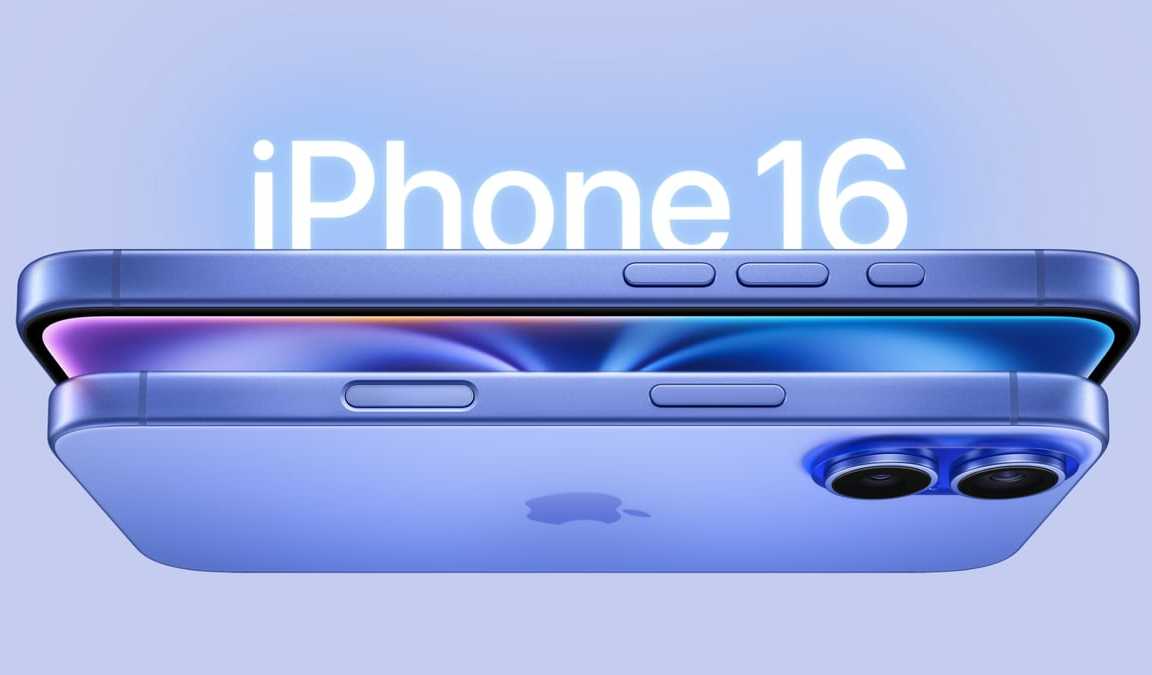Home News Technical iPhone 16 Launch: Why Apple Is Struggling To Introduce Advanced Features In New Releases
14 September, 2024

The launch of iPhone 16 is another momentous occasion for tech enthusiasts and loyal Apple fans. The event, filled with the usual fanfare, cutting-edge marketing and an impressive keynote, introduced the latest iPhone models.
However, despite attractive designs and incremental improvements, a growing number of critics and consumers alike are asking a question: Why hasn't Apple been able to introduce truly groundbreaking features in its latest iPhone iterations?
This question is especially important because Apple has long been at the forefront of technological innovation. From the first iPhone in 2007, which revolutionized the mobile phone industry, to the introduction of biometric security features like Touch ID and Face ID, Apple has been seen as a trendsetter. However, in recent years, it seems that the tech giants are focusing more on their past success and less on truly innovative innovations. Let's take a closer look at the factors behind this trend.
iPhone 16: What's New?
Before diving into the “why” behind the lack of revolutionary innovations, it's essential to understand what the iPhone 16 brings to the table.
- slightly larger display: The iPhone 16 has a slightly larger OLED display than its predecessor, with improvements in brightness and color accuracy. While visually impressive, it does not represent a significant leap from previous models.
- advanced camera technology: The camera system now includes improved AI-powered software that improves photography and video quality in low light. The optical zoom has been increased slightly, but many were expecting more, perhaps even a periscope lens or professional-grade improvements for mobile photography.
- Battery life and charging: Apple has improved battery life slightly and introduced faster wireless charging technology, though it's still competing with competitors like Samsung, which already offer faster charging speeds and more advanced battery technology.
- processor and performance: The A17 Bionic chip powers the iPhone 16, delivering faster processing and better energy efficiency. Still, this is a predictable upgrade rather than a game-changer. Users will likely appreciate the performance bump, but it doesn't break new ground.
Although these upgrades provide some marginal enhancements, they are evolutionary, not revolutionary. The iPhone 16 is undoubtedly a high-quality device, but the absence of truly advanced features makes it feel like Apple is resting on its laurels. Why?
Innovation Fatigue: Is It All About Plateauing?
One of the most widely speculated reasons for the apparent stagnation in innovation are that Smartphone technology has stagnated. Apple, along with its competitors, has reached a point where it has become more difficult to push the envelope.
In the early years of Smartphone development, there was a rapid increase in technology: touch screens, app ecosystems, mobile internet, high-definition cameras, biometrics, etc. However, as the market matured, the opportunities for revolutionary breakthroughs diminished. Most flagship smart phones, regardless of brand, now offer relatively similar features, with differences stemming more from ecosystem and user experience than groundbreaking hardware or software developments.
For Apple, this plateau is especially problematic because the company has built its reputation on innovation. But now, with fewer technological barriers left to break, the iPhone can evolve into a Smartphone in its current form. This begs the question: what's next for mobile innovation?
Supply Chain And Economic Realities
A less glamorous but very real factor in Apple's struggle to introduce radically new features is the state of global supply chains. The COVID-19 pandemic and subsequent geopolitical tensions have significantly impacted the production and distribution of cutting-edge technology.
Apple has long prided itself on its vertical integration and tight control over its supply chain, but even it is not immune to the semiconductor shortages, logistics delays and rising production costs that have plagued Apple over the past few years. Developing advanced technologies, especially on the scale that Apple demands, has become more difficult and expensive.
Furthermore, Apple is facing pressure to maintain high profit margins. Introducing new technologies often requires heavy research and development investments, and implementing these features on a large scale can reduce profits. The tech giant, known for its meticulous financial discipline, may play it safe by focusing on incremental improvements rather than taking big risks that could impact its bottom line.
Competition Is Gaining Momentum
Another reason why Apple seems to be slow in innovation is the emergence of strong competitors in the Smartphone market. Companies like Samsung, Google, and Huawei have bridged the gap in both hardware and software, introducing features that rival and sometimes even surpass those offered by the iPhone. For example:
- SAMSUNG has been a leader in foldable smart phones, an area where Apple has not yet established its foothold.
- Google Apple has introduced AI and machine learning with its Pixel phones, going beyond the computational photography and digital assistants currently offered by Apple.
- Huawei had made significant advances in camera technology before facing restrictions that limited its development globally.
The increasing uniformity in features across the Smartphone landscape puts pressure on Apple to differentiate itself not only through hardware, but through its software ecosystem and brand loyalty. However, when competitors are releasing phones with unique designs, faster charging, better cameras, or other distinctive features, Apple's incremental updates can seem lackluster by comparison.
Regulatory Barriers
There are also regulatory factors that could limit Apple, especially in markets outside the United States. For example, privacy laws across Europe and increasing global scrutiny of tech giants have led to restrictions on what data Apple can collect and how it can implement certain technologies. As privacy concerns rise, features like facial recognition, location tracking, and even health-related functionalities have come under the microscope.
Apple is known for its commitment to user privacy, but this dedication can sometimes limit its ability to innovate as freely as competitors who may not withstand the same scrutiny or hold the same high standards. For example, implementing more advanced AI-powered services often requires access to user data, which Apple has been reluctant to use, compared to other companies.
Sustainability And Environmental Concerns
Apple has also promised to reduce its environmental impact, by committing to using recycled materials in its devices and reducing e-waste. Although this is an admirable goal, it can also act as a constraint on innovation. Pushing the boundaries of new materials, experimenting with alternative battery technologies, or introducing new manufacturing processes may be limited by the need to comply with these environmental commitments.
For example, Apple's decision to move away from including a charger in the box, which started with the iPhone 12, was partly driven by its sustainability goals. Although this decision received a mixed response from consumers, it highlights the delicate balance Apple must strike between moving forward in terms of product development and meeting its environmental responsibilities.
Shift Towards Services
One of the most important strategic shifts at Apple over the past several years has been its focus on services rather than hardware. The company's ever-growing ecosystem of apps, music, TV, and fitness subscriptions now generates a large portion of its revenue. This emphasis on services reflects a broader trend in the tech industry where software and subscription-based models are becoming increasingly attractive.
For Apple, the success of its services business could mean less pressure to innovate on the hardware side. As long as iPhones are reliable and compatible with the latest apps and services, the company can continue to grow its revenue stream. This change has allowed Apple to maintain strong relationships with its customers, locking them into the broader Apple ecosystem, even if hardware is not advancing at the same pace as before.
The Future Of iPhone Innovation
As soon as the iPhone 16 hits the market, Apple fans and critics alike are left wondering what the future of iPhone innovation holds. The Smartphone industry has undoubtedly matured, and Apple's strategy seems to be evolving with it. Although revolutionary features may be few and far between, Apple remains a major force due to its unmatched ecosystem, brand loyalty, and commitment to user privacy and environmental sustainability.
The next big breakthrough in mobile technology probably won't come in the form of the iPhone. With Apple investing heavily in areas like augmented reality (AR), wearable technology, and healthcare services, we may soon see innovations that redefine our expectations from consumer technology beyond smart phones.
In the meantime, Apple will likely continue to refine its flagship product, introducing reliable improvements while working behind the scenes on the "next big thing." Whether it's a foldable iPhone, an augmented reality device, or something we haven't imagined yet, Apple's legacy of innovation means it may surprise us once again—just in time with the iPhone 16.

